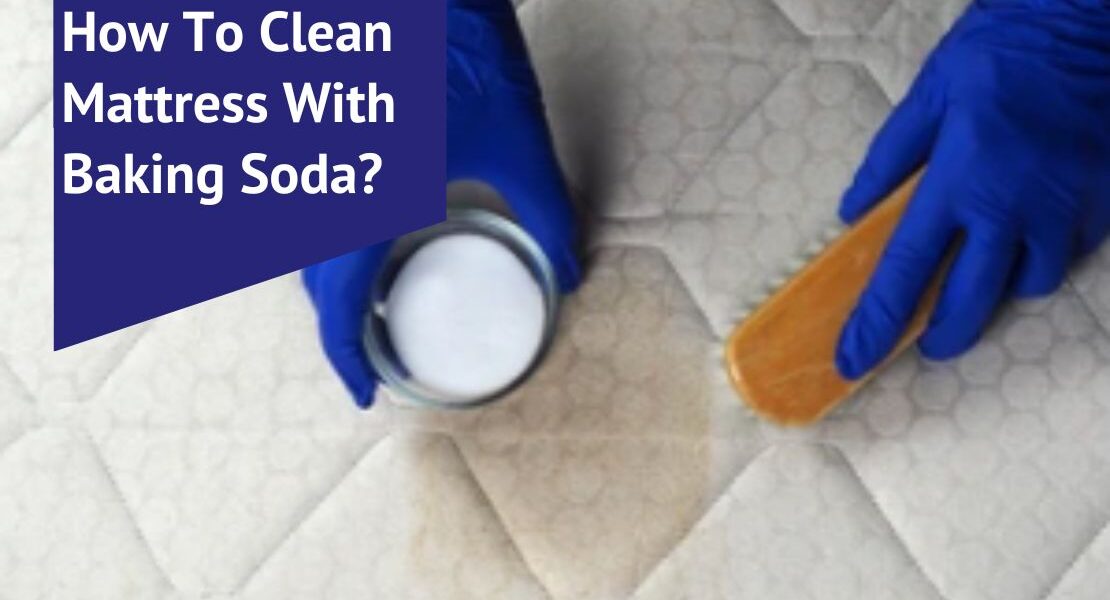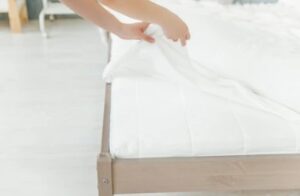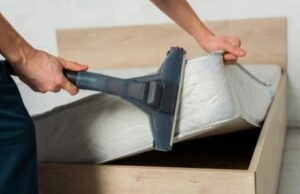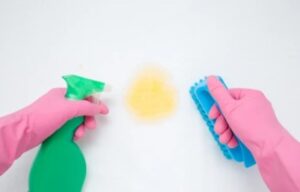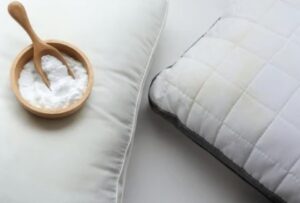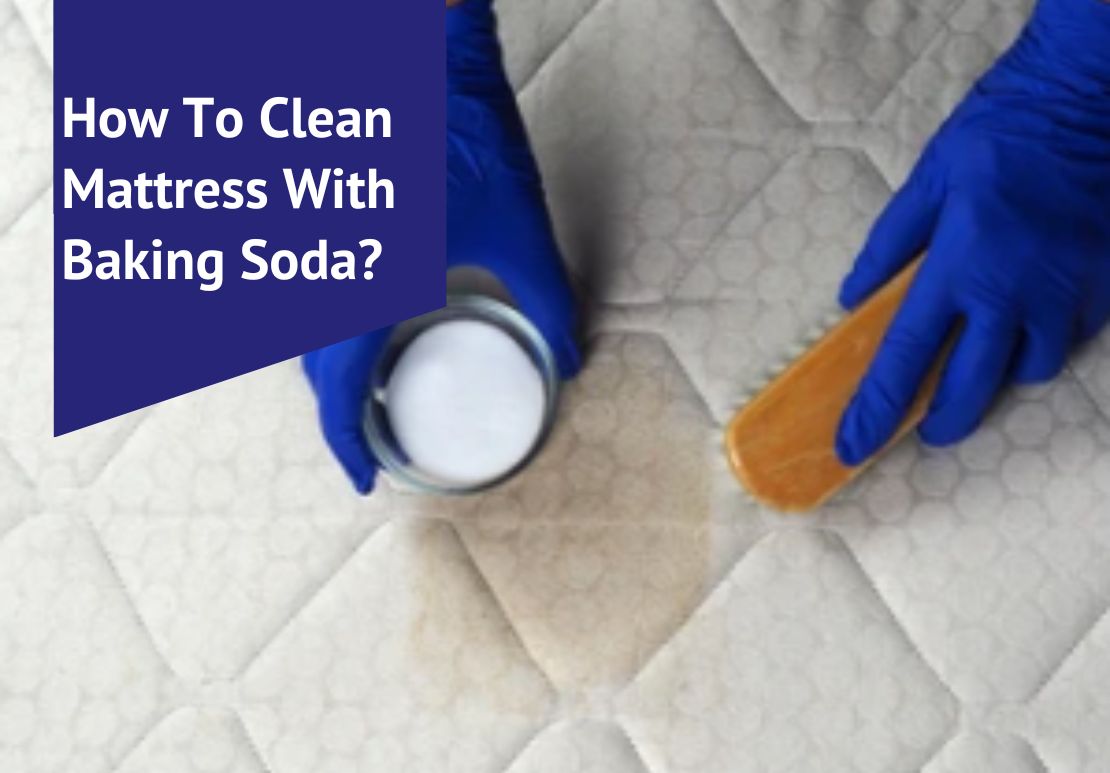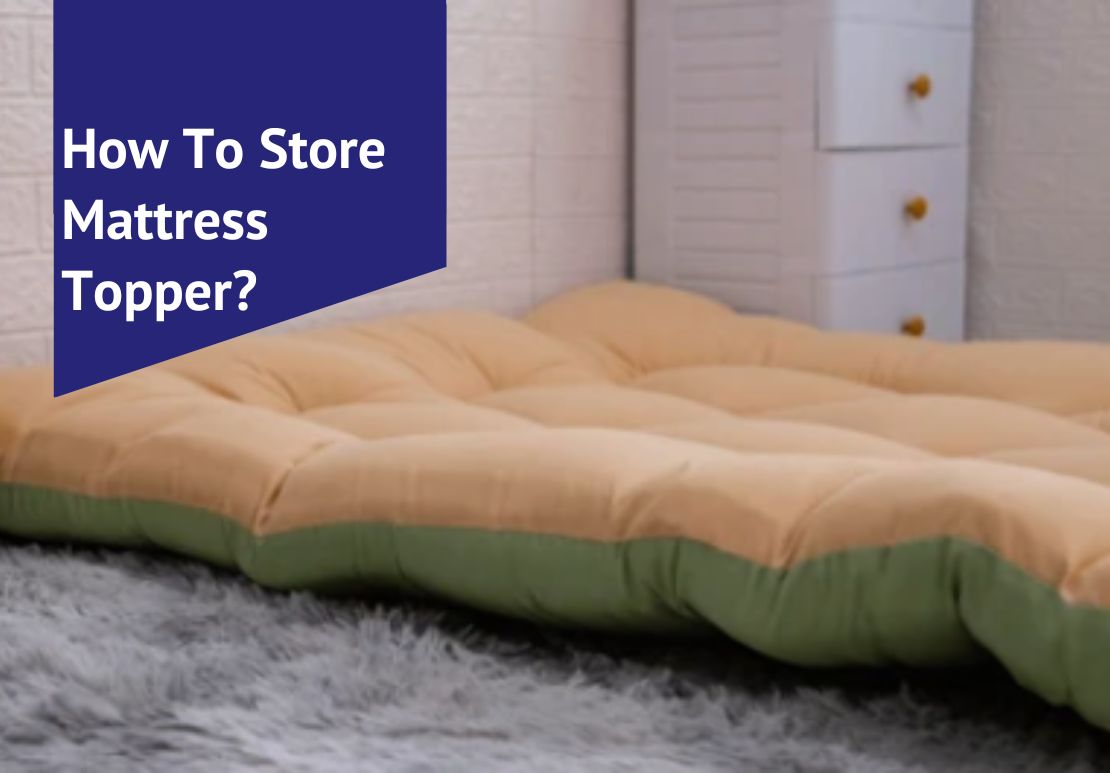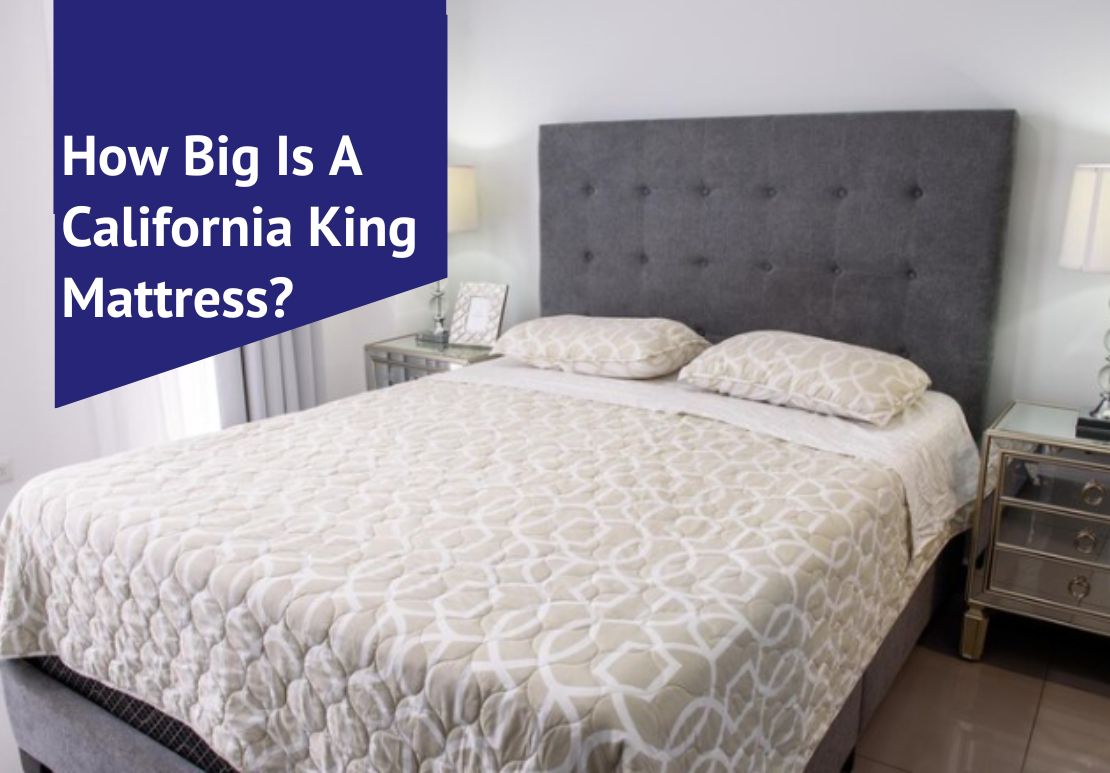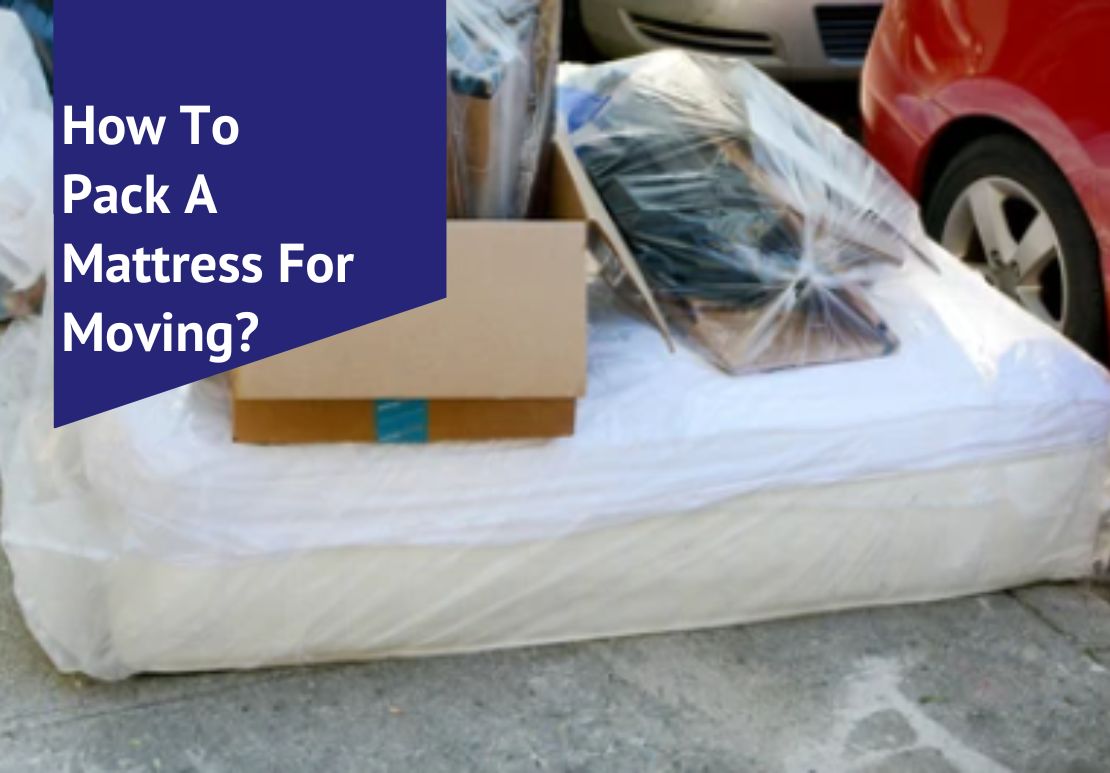Many people overlook the importance of a clean mattress, but it’s vital for good sleep hygiene and health. Baking soda, an everyday household staple, offers an affordable solution. This post will guide homeowners through using baking soda to remove odors and stains from their mattresses effectively.
Discover the freshening power of this simple ingredient and enjoy a cleaner sleeping environment.
Table of Contents
Key Takeaways
- Baking soda is a natural cleaner that absorbs moisture and odors, making it perfect for mattress cleaning every six months to ensure hygiene.
- To clean a mattress with baking soda, strip the bed, pre-clean it with a vacuum, and treat any stains with a paste of baking soda and water before sprinkling baking soda over the entire mattress surface.
- Letting the baking soda sit for several hours on the mattress will maximize its deodorizing power; vacuum off before remaking the bed with fresh linens.
- Keep your mattress dry during cleaning to prevent mold or mildew growth; do not over-wet, and ensure complete drying after using any moisture in stain treatments.
- Regular maintenance, like weekly washing of bedding in hot water and monthly vacuuming, can complement deep cleaning with baking soda to maintain freshness.
How Often Should You Clean Your Mattress?
Experts recommend cleaning your mattress every six months to maintain hygiene and prolong its life. Considering we spend about one-third of our lives sleeping, mattresses accumulate dust mites, allergens, dead skin cells, and body oils regularly.
A biannual deep clean can minimize these unwanted guests in your bed space.
For routine maintenance, freshening up your bedding weekly is key. Wash sheets and pillowcases in hot water to kill off dust mites and bacteria. And don’t forget to vacuum the mattress surface monthly to tackle any dirt or crumbs that might build up over time.
These simple steps will help keep odors at bay and create a cleaner sleeping environment.
Materials and Tools Needed
Understanding the frequency of mattress cleaning sets the stage for gathering the right materials and tools. Proper preparation ensures a successful and efficient cleaning process. Here is what homeowners will need to clean their mattresses with baking soda:
- A box of baking soda: This natural cleaner absorbs moisture and odors.
- A vacuum cleaner: Use one with an upholstery attachment to remove dust and allergens from the mattress surface.
- Essential oils (optional): Add oils like lavender to the baking soda for a refreshing scent.
- A small bowl or container: Mix your baking soda and essential oils in this.
- A sieve or shaker: This will help you evenly distribute the baking soda over the mattress.
- Clean water: Have it on hand to create a cleaning solution for stains.
- White vinegar (optional): Combine with water for a powerful stain remover.
- Spray bottle (optional): If using a liquid solution, this tool will apply it evenly without soaking the mattress.
- Microfiber cloths or sponges: These are gentle on fabrics and useful for blotting up any excess liquid when treating stains.
- A fan or open windows: Ensure good ventilation for drying and airing out the mattress after cleaning.
Steps to Clean Your Mattress with Baking Soda
Strip the bed, vacuum the mattress, treat stains, sprinkle baking soda, and remake the bed for a fresh and clean sleeping surface. For detailed instructions on each step, keep reading!
Strip the Bed
Begin by removing all the bedding from your mattress. This includes sheets, pillowcases, and any protectors you might have placed over it. Take these items and launder them according to their care instructions.
Cleaning a bare mattress is much easier without fabric coverings getting in the way.
Next, check for any debris that might linger on your mattress surface, such as hair or crumbs; lift them away gently with your hand. Ensuring a clean starting point maximizes the effectiveness of using baking soda in later steps for odor removal and deep cleaning of dust mites and allergens trapped within your mattress fibers.
Vacuum the Mattress
Once the bed has been stripped of all bedding and protectors, it is time to vacuum the mattress thoroughly. Use a handheld vacuum cleaner or an upholstery attachment on a regular vacuum to remove any surface dirt, dust, and debris from the mattress.
Pay close attention to seams and crevices where dust mites may accumulate, as these areas often harbor allergens and odors. Make sure to go over every inch of the mattress for a deep clean.
After vacuuming, it’s important to empty and clean your vacuum’s canister or change the bag right away to prevent any transferred allergens from re-entering your home environment. Vacuuming not only helps remove dust and debris but also aids in creating a clean slate for treating stains and applying baking soda for deep cleaning later on.
Treat Stains
To treat stains on your mattress, start by blotting the affected area with a clean cloth to absorb any excess liquid. Then, create a paste using baking soda and a small amount of water.
Gently rub the paste onto the stain using a soft brush or cloth, allowing it to sit for at least 30 minutes before wiping away with a damp cloth. Alternatively, mixing hydrogen peroxide with dish soap can also help lift stubborn stains from your mattress.
Apply the solution to the stain and gently scrub before blotting it dry.
For more challenging stains like blood or urine, combine baking soda with cold water to form a paste and apply it directly to the affected area before leaving for an hour. Afterward, carefully wipe away the paste and rinse with cold water as needed.
Sprinkle Baking Soda
After treating any stains on the mattress, it’s time to sprinkle baking soda over the entire surface. This natural and cost-effective solution works wonders in absorbing moisture, neutralizing odors, and freshening up the mattress.
Remember to evenly distribute a light layer of baking soda across the mattress and let it sit for several hours before vacuuming. This process allows baking soda to absorb any lingering odors effectively while ensuring your mattress stays clean and fresh.
Baking soda is proven to break down acids, absorb moisture, and effectively eliminate odors from your mattress. It’s a simple yet powerful way to naturally maintain the cleanliness and freshness of your sleeping environment without harsh chemicals or strong fragrances.
Remake the Bed
After allowing the baking soda to sit for several hours, homeowners can remake the bed. This involves replacing the bedding and ensuring that it is clean and fresh. Ensuring that all the bed’s components are neat and free from dust or debris is essential to complete the mattress cleaning process effectively.
Homeowners should experience a noticeably fresher and cleaner sleeping environment upon remaking the bed. As they make their beds, they can revel in the satisfaction of knowing that their mattress has been naturally cleaned using a cost-effective method – leaving them with a clean, odor-free space for restful slumber.
How does baking soda clean a mattress?
Baking soda effectively cleans a mattress by breaking down acids, absorbing moisture, and neutralizing odors. Its natural absorbency targets moisture and odor-causing particles, making it an ideal mattress cleaner.
When sprinkled over the entire surface and left to sit for several hours, baking soda acts as a deodorizer while simultaneously freshening up the mattress. Additionally, combining baking soda with essential oils or other cleaning solutions can create a fragranced cleaning solution that leaves your mattress smelling fresh.
Moreover, baking soda’s ability to remove stains further enhances its effectiveness in deep-cleaning mattresses at home. By allowing it to sit on the mattress for an extended period before vacuuming it off, homeowners can achieve cost-effective and natural maintenance of their mattresses’ cleanliness and freshness.
Implementing these methods will ensure homeowners maintain a clean and fresh sleeping environment for better health and sleep quality.
Additional Tips for Keeping Your Mattress Clean
Pre-clean the mattress thoroughly to remove any debris or dust, and test the baking soda on a small area before applying it to the entire mattress. Avoid over-wetting the mattress, and allow the baking soda to sit for adequate time before vacuuming it off.
Ensure that the mattress is completely dried before remaking the bed.
Pre-clean the Mattress Thoroughly
Before applying baking soda to your mattress, it’s crucial to pre-clean the surface thoroughly. This step involves stripping the bed of all bedding materials, including sheets, blankets, and pillowcases.
Next, use a vacuum cleaner with an upholstery attachment to remove dust mites, dirt, and debris from the mattress surface. Focus on seams, crevices, and any stained areas when vacuuming.
Additionally, if there are visible stains or spots on the mattress, consider using a gentle stain remover or cleaning solution before proceeding with the baking soda application.
When preparing for a deep clean with baking soda, homeowners should ensure that their mattresses are free of residual moisture or odors that may interfere with the effectiveness of this natural cleaning agent.
Test on a Small Area First
Before applying baking soda to the entire mattress, it is advisable to test it on a small, inconspicuous area first. This ensures that the baking soda does not have any adverse effects, such as discoloration or damage to the fabric of your mattress.
A small test patch will allow you to observe how the baking soda interacts with your specific mattress material without risking potential harm. By conducting this preliminary test, you can proceed confidently, knowing that cleaning will be safe and effective for your entire mattress.
Testing on a small area first allows one to confirm that there are no unforeseen reactions between the baking soda and your mattress material. This simple precaution ensures that you can move forward with peace of mind once you’re ready to clean the entire surface of your mattress.
Do Not Over-Wet the Mattress
When cleaning your mattress with baking soda, it is essential not to over-wet the fabric. Excessive moisture can lead to mold and mildew growth within the mattress layers, potentially causing health issues and reducing its lifespan.
Instead, use a light mist or damp cloth when treating stains and let the mattress thoroughly air dry before making the bed again.
Over-wetting may create an environment for dust mites and allergens to thrive in your mattress, impacting indoor air quality. A balanced approach of using minimal water-based solutions coupled with thorough drying will help maintain a clean and fresh sleeping surface for your overall well-being.
Allow Baking Soda to Sit
After sprinkling baking soda over the entire mattress, let it sit for several hours to absorb moisture and deodorize. The longer the baking soda sits, the better results you will achieve in terms of cleanliness and freshness for your mattress.
This process effectively removes odors and any lingering moisture from the mattress, leaving it feeling clean and smelling fresh.
By allowing baking soda to sit on the mattress for an extended period, homeowners can ensure they have thoroughly cleaned their mattresses without harsh chemicals.
Ensure Complete Drying
Once you have applied the baking soda to your mattress, ensure it is completely dried. This may require several hours of waiting for the baking soda to absorb moisture and odors from the mattress effectively.
To achieve complete drying, consider leaving the baking soda on the mattress for an extended period, allowing it to thoroughly work its deodorizing and cleaning magic. The longer you can leave it on before vacuuming, the better results you will likely experience.
Conclusion
In conclusion, cleaning your mattress with baking soda is a natural and effective way to maintain a fresh sleeping environment. Sprinkling baking soda over the mattress surface and allowing it to sit for several hours can help absorb moisture and odors.
Baking soda can also break down acid and remove stains, providing a deep clean without harsh chemicals. Following the steps outlined in this guide, homeowners can easily refresh their mattresses using an affordable and readily available solution.
Taking proactive measures to clean your mattress with baking soda is a simple yet impactful way to promote overall cleanliness and hygiene in your home.
Frequently Asked Questions
How do I clean a mattress with baking soda?
To clean a mattress with baking soda, sprinkle a generous amount over the entire surface, let it sit for several hours, then vacuum it thoroughly.
Can I use any type of baking soda to clean my mattress?
Yes, you can use any baking soda available in stores to effectively clean your mattress.
Is it safe to leave baking soda on the mattress for an extended period?
Yes, leaving baking soda on the mattress for several hours is safe and allows it to absorb odors and moisture effectively.
Do I need to vacuum both sides of the mattress after using baking soda?
Vacuuming one side of the mattress after baking soda is sufficient to remove the residue and freshen up the bedding.
How often should I clean my mattress with baking soda?
It's recommended to clean your mattress with baking soda every 1-2 months or as needed based on usage and freshness preferences.
How to remove stains from a mattress using baking soda?
To remove a stain from a mattress using baking soda, start by blotting the stained area with a clean cloth to soak up any excess liquid. Then, sprinkle a generous amount of baking soda over the stain and let it sit for at least 30 minutes before vacuuming it. This should help absorb and lift the stain from the mattress.

